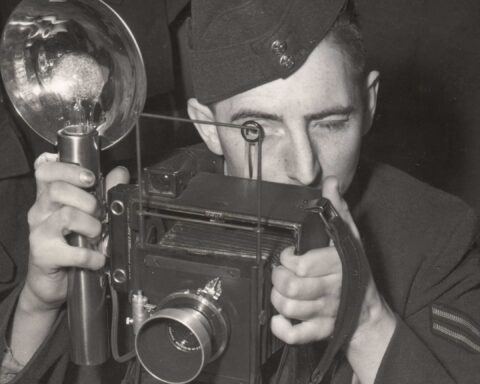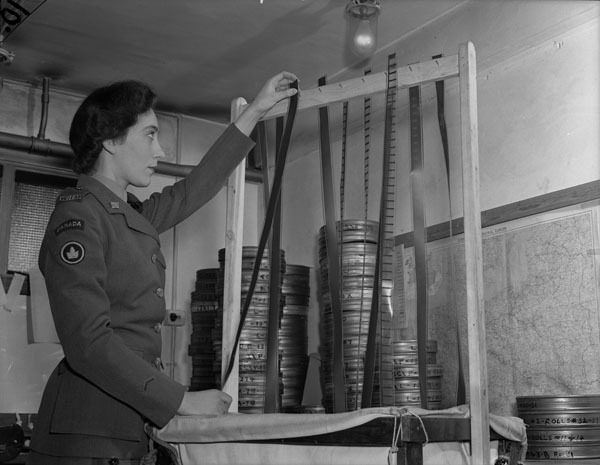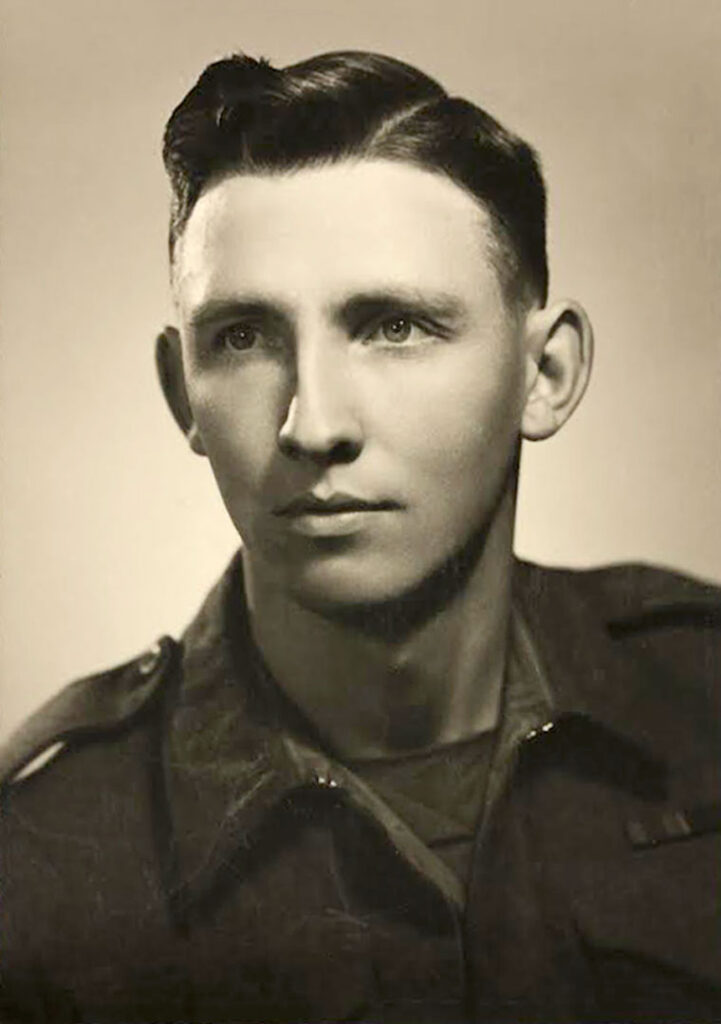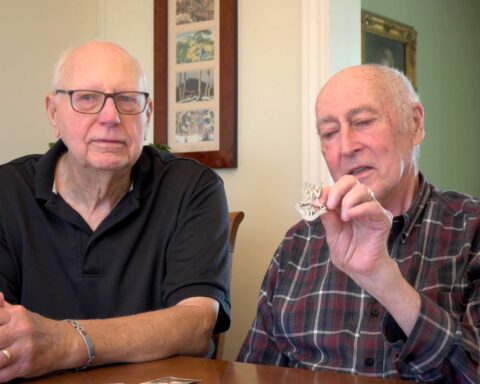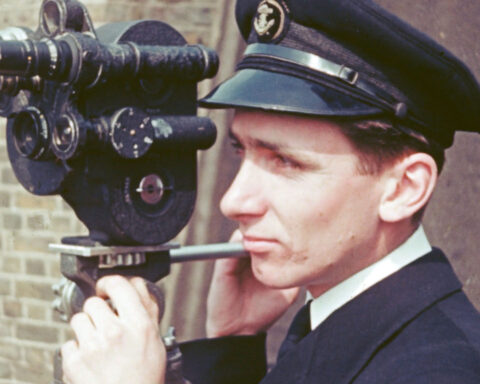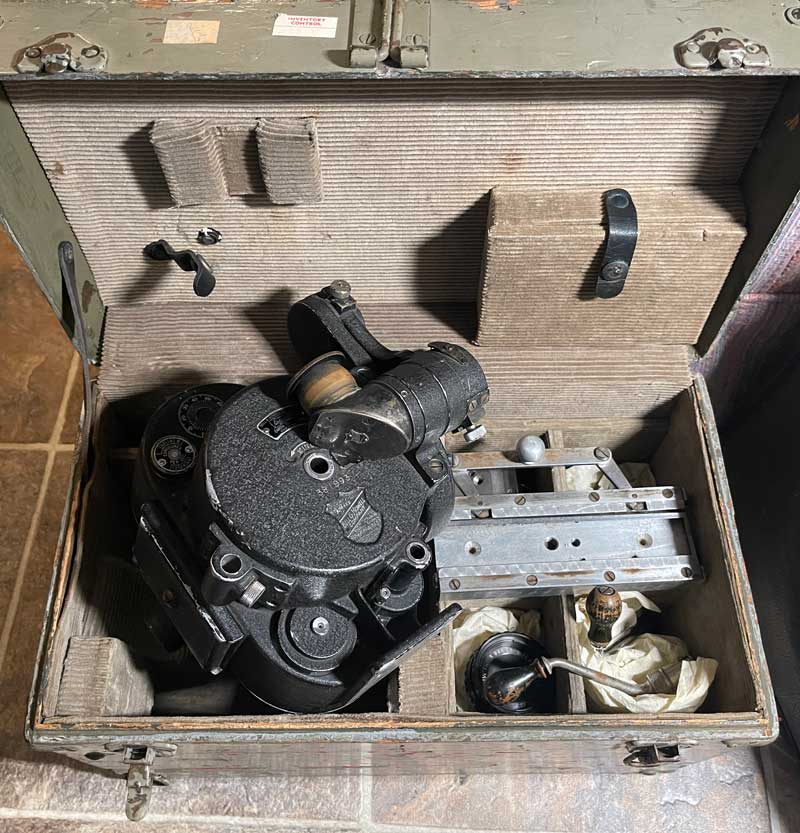
by the Canadian Army Film and Photo Unit
Just days away from commemorating Remembrance Day on November 11th, I received an exciting email from Chris Graham of Ottawa;
"I recently came across the article about Norman Quick’s Eyemo Camera (https://canadianfilm.ca/2007/01/30/search-combat-camera/) and I am wondering If I have it in my possession."
The article Chris had referred to was written by me and published in the 50th Anniversary Edition of the Canadian Society of Cinematographers News magazine (January 2007, Volume 26, No. 3). The goal in writing the article was a hope to broaden the search in tracking down Sgt. (Ret) Norman Quicks‘ (1921-2013), WWII Bell & Howell Eyemo. Up to this point, I had been searching listings on eBay, and scouring the web, and viewing websites that sold vintage B&H movie cameras. Nothing had led to positively identifying a vintage CFPU cine camera. Until now.
One of the challenges was how to accurately identify that a model had been acquired by the Canadian Army Film & Photo Unit.
In the case of Norman Quick, he had supplied me with a serial number for his Bell & Howell, Eyemo.
"The missing item is a Bell & Howell, single-lens, 35mm motion picture film camera, the Eyemo 71. This type of camera was used exclusively in World War II by the Canadian Army Film and Photo Unit, of which Norm was a member. Later on in the war, the Eyemo Spyder 71QM model would become the standard issue."
So when I received the email from Chris, I quickly responded that yes, I would be very interested in seeing some images of the camera, and in particular the serial number which is stamped on the outside of the camera.

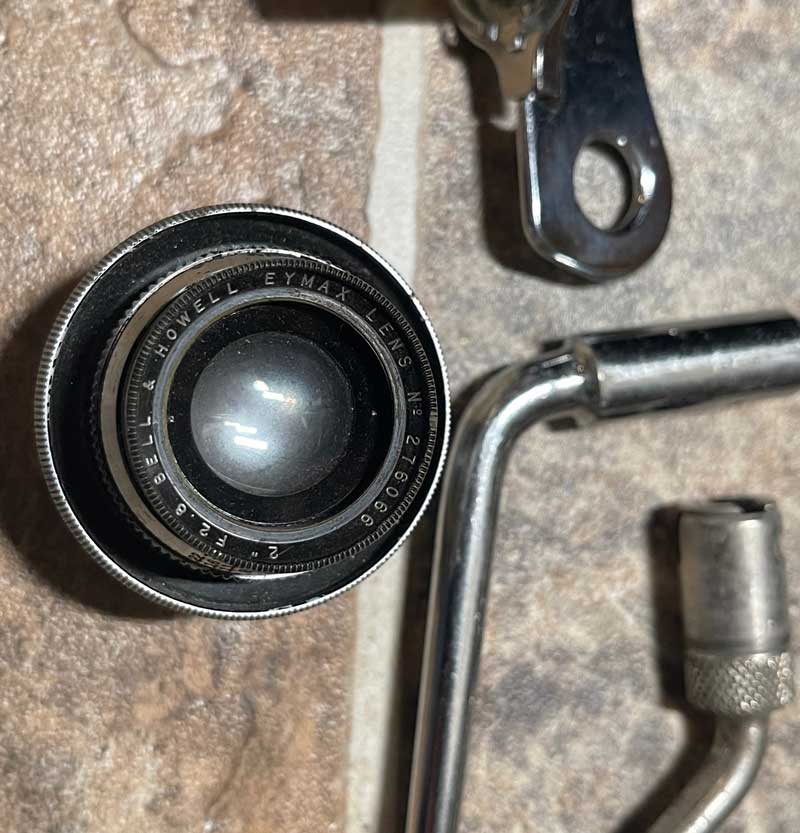
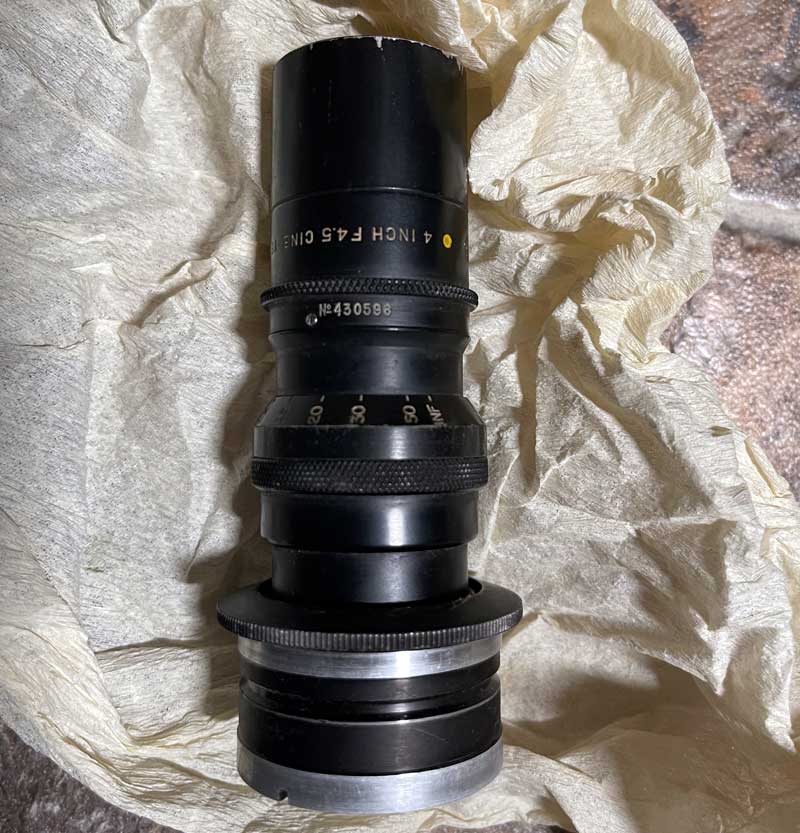
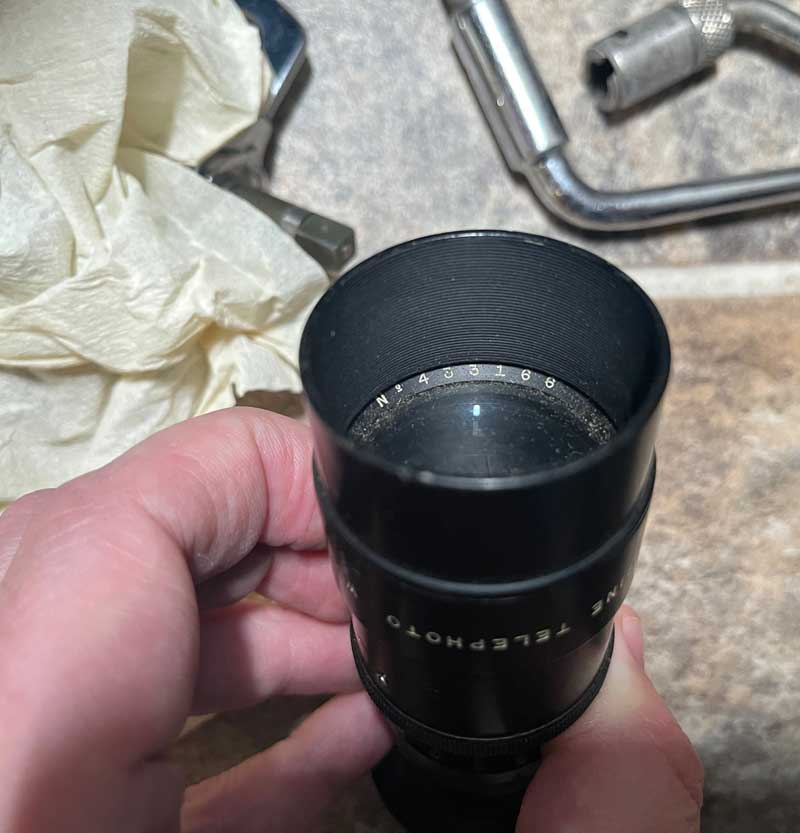
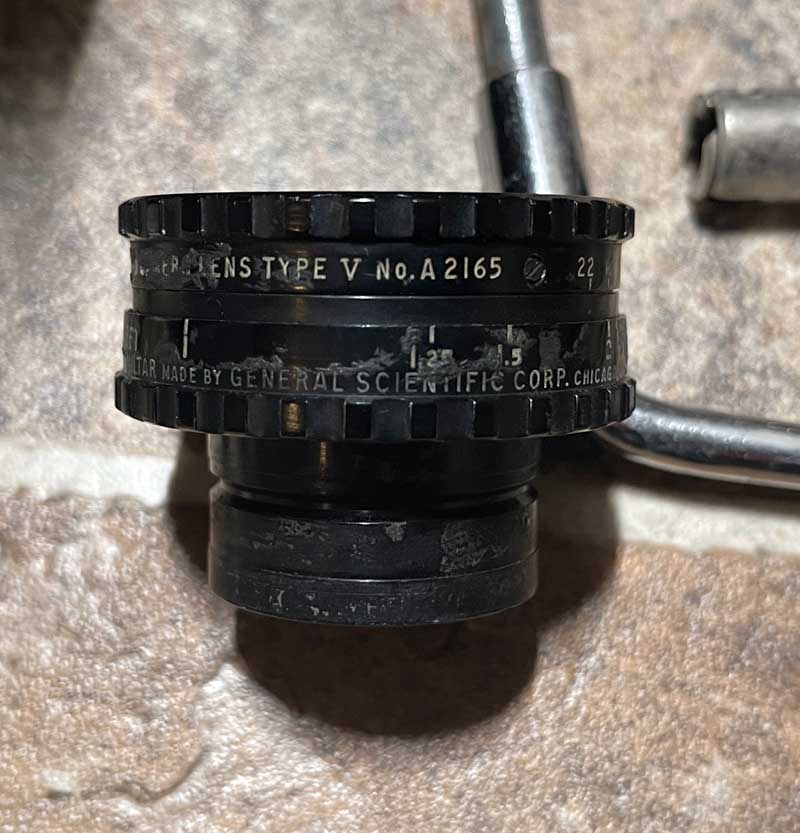
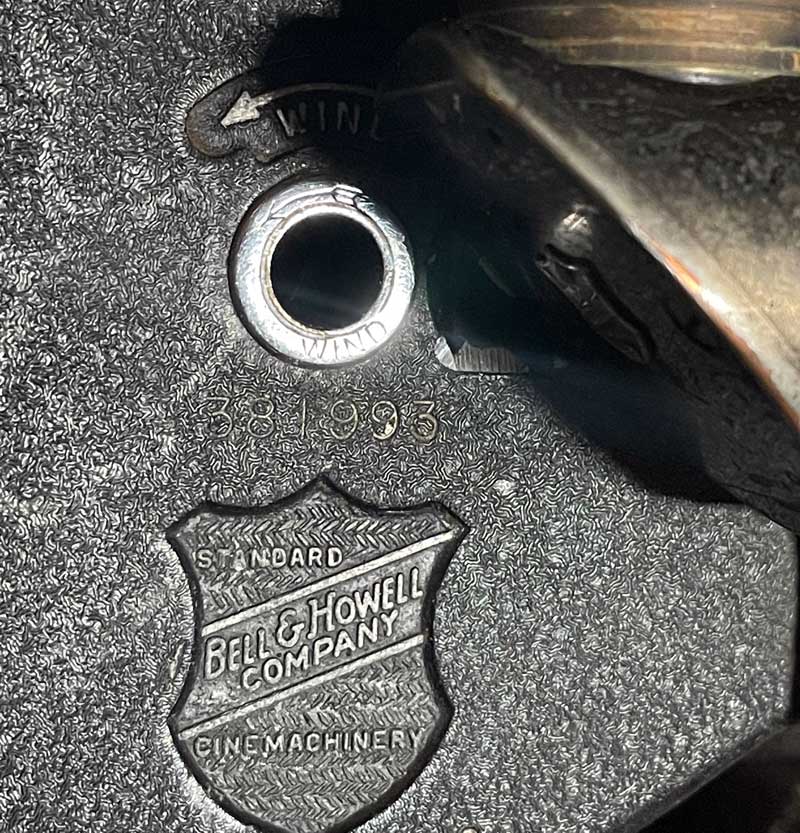
Chris would go on to explain, “I received a number of oddities from my uncle when he moved to Mississauga 25 years ago, one of which is an old B&H Eyemo camera in a wooden box (since painted grey) with some loose lenses, and accessories etc. My Uncle, Ian Graham (deceased) was a peacekeeper in Cypress and then worked for Spartan/Kenting Earth Sciences here in Ottawa where he would bring this camera with him for aerial geomagnetic mineral surveys all over the world. When I looked inside the wooden box this morning (after reading this article), I can see the box may have been originally painted army green.”
Beside myself with excitement, I hurriedly dove into my office files and folders in search of the serial number Norman Quick had given me. After an hour or so of searching, I was thrilled to come across his hand written note to me in a folder. Along with the serial number for the camera, Norm’s note also revealed the serial numbers for his 2 & 6 inch lenses. Comparing Norms serial number to the one Chris had sent me, my heart sank…no match.
Okay, so it wasn’t Norms camera. But could it still be associated with the Canadian Army Film Unit? The images Chris sent me looked authentic enough, but how to be sure. Without a serial number, there just wasn’t any real way of knowing.
One frustrating fact was when the war ended, CFPU personnel were not able to retain their camera equipment.
"As Norm describes them, the cameras were a part of you, and many of those within the Film Unit became very attached to their equipment. At the end of the war, however, the army repossessed the cameras and they were sent to Crown Assets for resale."
Not to be so easily dissuaded, I focused my attention on the copious notes I had gathered over the years regarding the Public Relations Film Unit.
Flipping through pages of files, I finally located a document that caught my eye; It was a voucher for receipt of 20 cine motion film cameras, dated 24th November, 1943, Issued by the Directorate of Public Relations (Army) in Ottawa, Ontario to C.M.H.Q at London, England. The document listed the 20 cameras in two sets;
“CAMERAS, Bell & Howell Turret Eyemos, 35 mm, with Bell & Howell Eymax F.2.8 Lens 2 inch, with Carrying Case – Quantity 10”
…along with;
“CAMERAS, Victor 16mm Model 4, with F.1.5 – 1 inch Wollensak lens – Quantity 10”
I ignored the list of the 16mm Victor’s for the moment, wondering briefly, ‘for whom were these cameras for’? Returning to the list of ten Eyemos, I held my breath as I ventured down the list; Camera 1 nope…Camera 2 nope…Camera 3 nope…Cameras 4, 5, 6, 7, 8 nope, nope, nope…then with a sigh of surprise, relief and excitement, I read the serial number for Camera (9); Serial No. 381993 !
I excitedly replied back to Chris,
"Chris - You have in your possession an original B&H Eyemo from the Canadian Army Film Unit!!!!!"
After sharing our excitement over the phone, we agreed to find a home for the camera, with a promise to meet up at some point to discuss the process further.
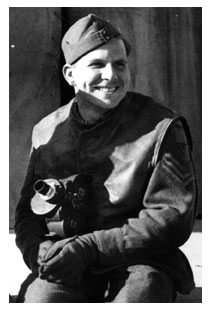
In the future I intend to create a separate post, with a listing of all known available serial numbers, along with descriptions of the camera’s and lenses that were acquired by Public Relations during WWII.
Who knows?! Perhaps there are more camera’s to be found tucked away in attics and basements across Canada and around the world.
After almost 78 years since this camera was purchased in November, 1943, wouldn’t Norman Quick and his colleagues have been thrilled.
© Dale Gervais 2021
TROUVÉ : Caméra de cinéma CFPU

À quelques jours de la commémoration du jour du Souvenir le 11 novembre, j’ai reçu un courriel passionnant de Chris Graham d’Ottawa;
“Je suis récemment tombé sur l’article sur la caméra Eyemo de Norman Quick (https://canadianfilm.ca/2007/01/30/search-combat-camera/) et je me demande si je l’ai en ma possession.”
L’article auquel Chris faisait référence a été écrit par moi et publié dans l’édition du 50e anniversaire du magazine Canadian Society of Cinematographers News (janvier 2007, volume 26, n° 3). Le but de la rédaction de l’article était l’espoir d’élargir la recherche dans la recherche de (Ret) Norman Quicks (1921-2013), WWII Bell & Howell Eyemo.Jusqu’à présent, j’avais recherché des annonces sur eBay, parcouru le Web et consulté des sites Web vendant des caméras B&H vintage. Rien n’avait permis d’identifier positivement une caméra de cinéma vintage CFPU. Jusqu’ici.
L’un des défis consistait à déterminer avec précision qu’un modèle avait été acquis par l’Unité de film et de photographie de l’Armée canadienne.
Dans le cas de Norman Quick, il m’avait fourni un numéro de série pour son Bell Howell, Eyemo.
“L’élément manquant est une caméra cinématographique Bell & Howell à objectif unique de 35 mm, l’Eyemo 71. Ce type de caméra a été utilisé exclusivement pendant la Seconde Guerre mondiale par l’Unité de film et de photo de l’Armée canadienne, dont Norm était membre. . Plus tard dans la guerre, le modèle Eyemo Spyder 71QM deviendra le modèle standard.”
Alors quand j’ai reçu le mail de Chris, j’ai rapidement répondu que oui, je serais très intéressé de voir quelques images de l’appareil photo, et notamment le numéro de série qui est estampillé à l’extérieur de l’appareil photo.






Chris poursuivait en expliquant : “J’ai reçu un certain nombre de bizarreries de la part de mon oncle lorsqu’il a déménagé à Mississauga il y a 25 ans, dont l’une est un vieil appareil photo B&H Eyemo dans une boîte en bois (depuis peinte en gris) avec des objectifs lâches, et accessoires etc.. Mon oncle, Ian Graham (décédé) était un gardien de la paix à Cypress et a ensuite travaillé pour Spartan/Kenting Earth Sciences ici à Ottawa où il apportait cet appareil photo avec lui pour des levés géomagnétiques aériens partout dans le monde. la boîte en bois ce matin (après avoir lu cet article), je peux voir que la boîte a peut-être été peinte en vert armée à l’origine.”
Fou de joie, j’ai plongé à la hâte dans mes dossiers et dossiers de bureau à la recherche du numéro de série que Norman Quick m’avait donné. Après environ une heure de recherche, j’ai été ravi de tomber sur sa note écrite à la main dans un dossier. En plus du numéro de série de l’appareil photo, la note de Norm a également révélé les numéros de série de ses objectifs 2 et 6 pouces. En comparant le numéro de série de Norms à celui que Chris m’avait envoyé, mon cœur s’est serré… pas de match.
D’accord, ce n’était donc pas la caméra Norms. Mais pourrait-il encore être associé à la Canadian Army Film Unit ? Les images que Chris m’a envoyées semblaient assez authentiques, mais comment en être sûr. Sans numéro de série, il n’y avait tout simplement aucun moyen de le savoir.
Un fait frustrant est que lorsque la guerre a pris fin, le personnel de l’UPFC n’a pas pu conserver son équipement photographique.
“Comme Norm les décrit, les caméras faisaient partie de vous, et beaucoup de ceux au sein de l’unité du film sont devenus très attachés à leur équipement. À la fin de la guerre, cependant, l’armée a repris possession des caméras et elles ont été envoyées aux biens de la Couronne. pour la revente.”
Pour ne pas être si facilement dissuadé, j’ai concentré mon attention sur les nombreuses notes que j’avais recueillies au fil des ans concernant l’Unité du film de relations publiques.
En feuilletant des pages de dossiers, j’ai finalement trouvé un document qui a attiré mon attention ; C’était un bon pour la réception de 20 caméras cinématographiques, daté du 24 novembre 1943, délivré par la Direction des relations publiques (Armée) à Ottawa, Ontario au C.M.H.Q à Londres, Angleterre. Le document énumérait les 20 caméras en deux ensembles;
CAMÉRAS, Bell & Howell Turret Eyemos, 35 mm, avec Bell & Howell Objectif Eymax F.2.8 2 pouces, avec étui de transport – Quantité 10″
…de même que;
“APPAREILS PHOTO, Victor 16mm Modèle 4, avec objectif Wollensak F.1.5 – 1 pouce – Quantité 10”
J’ai ignoré la liste des 16mm Victor pour le moment, me demandant brièvement, ‘pour qui étaient ces caméras’ ? Revenant à la liste des dix Eyemos, j’ai retenu mon souffle en m’aventurant dans la liste; Caméra 1 non… Caméra 2 non… Caméra 3 non… Caméras 4, 5, 6, 7, 8 non, non, non… puis avec un soupir de surprise, de soulagement et d’excitation, j’ai lu le numéro de série de la caméra (9) ; N° de série 381993 !
J’ai répondu avec enthousiasme à Chris,
“Chris – Vous avez en votre possession un B&H Eyemo original de l’unité de cinéma de l’armée canadienne !!!!!”
Après avoir partagé notre enthousiasme au téléphone, nous avons convenu de trouver une maison pour l’appareil photo, avec la promesse de nous rencontrer à un moment donné pour discuter davantage du processus.

À l’avenir, j’ai l’intention de créer un article séparé, avec une liste de tous les numéros de série disponibles connus, ainsi que des descriptions des appareils photo et des objectifs acquis par les relations publiques pendant la Seconde Guerre mondiale.
Qui sait?! Il y a peut-être plus de caméras cachées dans les greniers et les sous-sols au Canada et dans le monde.
Près de 78 ans après l’achat de cet appareil photo en novembre 1943, Norman Quick et ses collègues n’auraient-ils pas été ravis.
© Dale Gervais 2021



